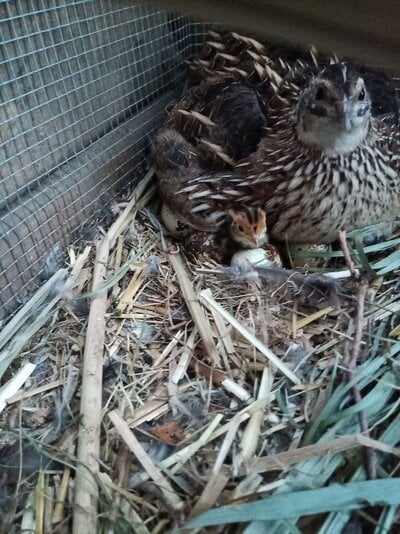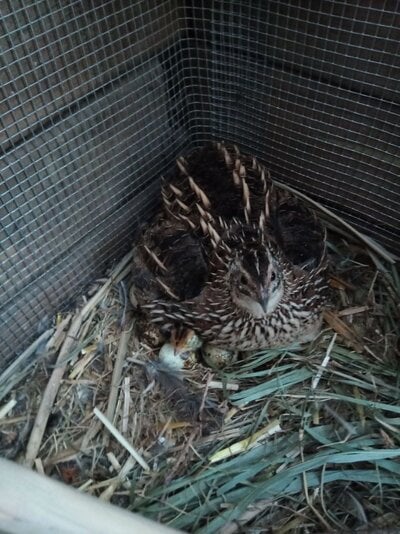Oob Child
Crowing
- May 13, 2023
- 1,375
- 2,671
- 391
How can I encourage my quail to go broody?
What nesting materials will I need? I am currently supplying them with sand and wood shavings. They also have fake grass, a small section of wire flooring and paper towels over wood to walk on.
How can I modify my cage to encourage them?
There are currently 3 females and one male inhabiting the cage, and I am working on getting another female. These are the candidates:
Hercules, Female.

Spot, Female.

George, Female.

Sugar, Male.

If you need to know the individual behaviors of each of them, please ask.
Do I need more natural hiding spots? Where can I find materials for these?
The cage I am keeping them in currently looks like this. Sorry about the pictures of the bottom section being dark, I'll take better pictures of needed.











I am planning on getting them some bush cuttings from my nan & pop's when I get back from holidays.
What nesting materials will I need? I am currently supplying them with sand and wood shavings. They also have fake grass, a small section of wire flooring and paper towels over wood to walk on.
How can I modify my cage to encourage them?
There are currently 3 females and one male inhabiting the cage, and I am working on getting another female. These are the candidates:
Hercules, Female.
Spot, Female.
George, Female.
Sugar, Male.
If you need to know the individual behaviors of each of them, please ask.
Do I need more natural hiding spots? Where can I find materials for these?
The cage I am keeping them in currently looks like this. Sorry about the pictures of the bottom section being dark, I'll take better pictures of needed.
I am planning on getting them some bush cuttings from my nan & pop's when I get back from holidays.





